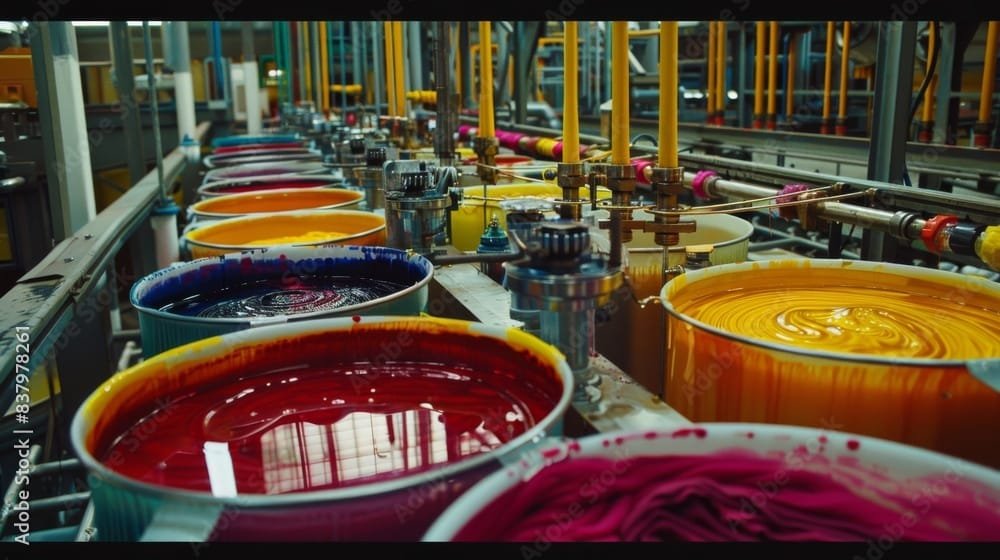Introduction to Water-Based Paint Manufacturing
Water-based paints are a widely used category of coatings that employ water as the primary solvent for the paint’s composition. Composed of pigments, binders, and additives suspended in water, these paints contrast sharply with traditional solvent-based paints that rely on organic solvents. The primary component that facilitates the functionality of water-based paints is the binder, often derived from acrylic or latex compounds, which imparts adhesion and durability while providing a stable structure to the formulation.
The environmental advantages of mithila paints, an emerging genre of water-based paints, are significant. Notably, water-based formulations tend to contain lower levels of volatile organic compounds (VOCs) compared to their solvent-based counterparts. This reduction in VOC emissions contributes to a healthier indoor air quality and lessens air pollution, addressing growing concerns about environmental sustainability and human health. As industries seek more eco-friendly products, the popularity of water-based paints continues to expand across various applications, including residential, commercial, and industrial settings.
In addition to their improved environmental profile, water-based paints offer several practical benefits. They typically dry faster than solvent-based paints, which allows for quicker project turnaround times. Furthermore, they are easier to clean up, requiring only water for thinning and cleaning brushes or equipment, making them a more convenient option for both professional painters and DIY enthusiasts. The versatility of these paints allows them to be used effectively on a range of surfaces, from walls to furniture, making them a preferred choice in contemporary painting projects. As the demand for more eco-conscious solutions grows, the appeal of mithila paints and other water-based options will likely continue to rise.
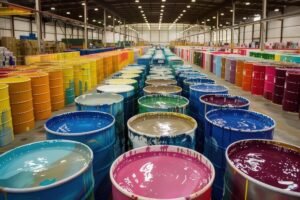
Key Components of Water-Based Paints
Water-based paints primarily consist of several key components that collectively determine their performance, appearance, and durability. The four main components are pigments, binders, solvents, and additives, each playing an integral role in the formulation of mithila paints.
Firstly, pigments are essential in providing color and opacity to water-based paints. These finely divided, colored particles can be organic or inorganic, with specific selections made based on the desired colorfastness and application. For instance, certain pigments are preferred for their brightness and resistance to fading, while others are chosen for their environmental compatibility. In the context of mithila paints, vibrant colors are fundamental as they capture the traditional artistry associated with this style.
Next, binders are crucial for adhering the pigment particles to the surface, acting as a film-forming agent when the paint dries. Water-soluble resins, such as acrylic or vinyl, are typically employed in water-based formulations. The choice of binder influences the gloss and overall finish of the paint, as well as its durability against environmental factors. Selecting the appropriate binder is essential for achieving the desired characteristics in both decorative and protective applications.
The solvent in water-based paints is primarily water, which provides a safer and more environmentally friendly alternative to solvent-based formulations. This adoption of water as a solvent not only enhances user safety but also reduces volatile organic compound (VOC) emissions. Additives are included to improve specific properties of the paint, such as flow, leveling, and drying rates. They can enhance attributes like mildew resistance or improve the paint’s overall stability during storage.
When selecting components for water-based paints, considerations such as application environment, desired finish, and longevity are crucial. Each component must synergize effectively to produce a stable and high-quality product, ultimately yielding excellent performance and aesthetic appeal.

The Manufacturing Process
The manufacturing process of water-based paints is a meticulous journey that begins with the careful selection of raw materials. These materials typically include pigments, binders, solvents, and additives. The quality of these ingredients directly impacts the performance of the final product, such as mithila paints, which are renowned for their vibrant colors and durability. Thus, sourcing high-quality materials is crucial to ensure that the end product meets the desired specifications.
Once the raw materials are selected, the first key stage is pigment dispersion. In this phase, pigments are thoroughly blended with the chosen solvents or water to break them down into smaller particles. This process ensures that the colors achieve the desired intensity and uniformity. Effective dispersion is vital as it prevents pigment settling, which can lead to inconsistencies in color when the paint is applied.
Following dispersion, the next step involves mixing. All other components, such as binders and additives, are integrated at this stage to create a homogenous mixture. The emulsification process is also critical here, wherein oils or resins are blended with water-based components. This stage enables the formation of a stable emulsion that enhances the paint’s adhesion properties and ensures proper application.
Once the emulsion is achieved, milling takes place to further fine-tune the texture of the paint. Milling reduces the size of pigment particles, resulting in a smoother consistency that enhances the paint’s spreadability and finish. Throughout the entire manufacturing process, implementing stringent quality control measures is essential. Regular testing is conducted to ensure that the mithila paints produced align with industry standards and consumer expectations.
In conclusion, understanding the various stages—from raw material selection to final quality control—ensures the successful production of high-quality water-based paints, including the culturally significant mithila paints, allowing them to maintain their legacy in decorative artistry.
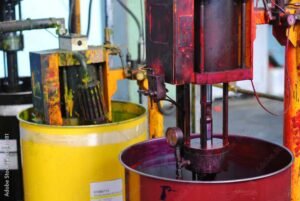
Sustainability in Water-Based Paint Production
In recent years, the importance of sustainability in various industries has gained significant attention, particularly in the manufacturing of water-based paints. These environmentally friendly paints are increasingly favored due to their reduced volatile organic compounds (VOCs) and lower environmental impact when compared to traditional solvent-based paints. A key aspect of sustainable production practices is the utilization of renewable resources. Many manufacturers now prioritize the incorporation of bio-based ingredients derived from plants or other organic sources, resulting in safer, non-toxic formulations. This approach not only minimizes dependence on fossil fuels but also promotes ecological balance.
Another essential facet of sustainability in water-based paint production is the reduction of waste. Companies are adopting methods to streamline their processes and minimize excess material. For instance, innovations in spray technologies allow for more precise application with minimal overspray, thereby reducing waste. Furthermore, practices such as recycling and reusing materials from production processes are becoming prevalent among manufacturers. These initiatives foster a circular economy, where waste is significantly diminished, and resources are conserved.
Energy-efficient manufacturing techniques also contribute to the sustainability of water-based paints. Improvements in equipment and processes, such as the use of renewable energy sources and energy-efficient machinery, help to decrease the ecological footprint of manufacturing operations. Several companies, recognized for their leadership in sustainable practices, exemplify this approach. For instance, particular brands have committed to carbon-neutral production processes, showcasing the viability of eco-conscious manufacturing in the paint industry.
The integration of these sustainable practices highlights the potential of water-based paints, such as mithila paints, to positively impact both the environment and the community. As the demand for eco-friendly products grows, it is crucial for the industry to embrace sustainable strategies that ensure a healthier future.

Challenges in Water-Based Paint Manufacturing
Water-based paint manufacturing presents several unique challenges that can complicate the production process. One significant issue is formulation stability. Unlike their solvent-based counterparts, water-based formulations can be more susceptible to changes in temperature and humidity, which can adversely affect the consistency and longevity of the product. Manufacturers often face difficulties in achieving and maintaining the right balance of pigments and additives to ensure the final product retains its intended properties over time. As such, rigorous testing and modifications to the formulation often become necessary to combat these instabilities.
Another challenge encountered in the production of water-based paints is the drying time. Generally, water-based paints tend to dry slower than solvent-based paints due to their higher water content. This can lead to prolonged production cycles and may pose difficulties in meeting tight deadlines. To address this issue, manufacturers have begun utilizing advanced drying agents and additives that expedite the drying process without compromising the paint’s quality. Innovations in technology, such as the development of infrared drying systems, have also proven effective in enhancing drying efficiencies.
Performance under various environmental conditions is a further concern in the water-based paint sector. External factors such as humidity, temperature fluctuations, and UV exposure can affect the durability and adhesion of the paint. Manufacturers need to ensure that their products can withstand these variables while still providing excellent coverage and appearance. Continuous research and development efforts are focused on improving the resilience and overall performance of water-based paints through the incorporation of superior resins and additives.
In conclusion, addressing the challenges in manufacturing water-based paints requires a multifaceted approach that encompasses formulation modifications, enhanced drying technologies, and impactful research strategies. By overcoming these obstacles, producers can ensure the reliability and success of their water-based offerings in a competitive marketplace.
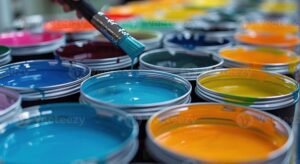
Regulations and Safety Standards
The manufacturing of water-based paints is governed by a variety of regulations and safety standards that aim to protect both consumer health and the environment. Key organizations, including the Environmental Protection Agency (EPA), play a significant role in establishing guidelines that paint manufacturers must adhere to. These regulations address the chemical composition of paints, emission levels of volatile organic compounds (VOCs), and the safe disposal of waste products.
Manufacturers of water-based paints are required to ensure that their products meet specific VOC limits, which vary by state and type of paint. These restrictions are crucial to minimizing air pollution and protecting indoor air quality, given that many paints release harmful chemicals during application and drying. To comply with these regulations, companies often conduct rigorous testing of their formulations and make necessary adjustments to reduce VOC levels without compromising performance.
Moreover, proper labeling of paint products is a fundamental requirement imposed by regulatory bodies. Labels must clearly indicate the contents and hazards associated with the paint, which informs both customers and retailers. Safety Data Sheets (SDS) must also be provided, detailing information about the safe handling, storage, and disposal of the paints. These documents serve as vital resources in hazard communication, ensuring that workers and consumers are aware of potential risks involved in using water-based paints.
In essence, adherence to regulations and safety standards is not merely a legal obligation for manufacturers but also a critical aspect of corporate responsibility. By following these guidelines, companies contribute to a safer environment and promote consumer confidence in their products. This commitment to safety is particularly important as the industry continues to evolve, aiming for more eco-friendly solutions like mithila paints, which align with growing environmental concerns.
Applications of Water-Based Paints
Water-based paints are increasingly popular across a variety of sectors due to their versatility and eco-friendliness. Their applications span residential, commercial, and industrial environments, each benefiting from the unique properties that these paints provide. In residential settings, water-based paints are a favorite choice for interior walls and ceilings, allowing homeowners to select from a wide range of colors while minimizing the odor typically associated with solvent-based paints. Additionally, these paints dry quickly, making them an efficient option for home improvement projects.
In commercial environments, water-based paints are utilized for both aesthetic and practical reasons. They are often applied in offices, retail spaces, and hospitality venues because of their low VOC (volatile organic compounds) levels, which contribute to healthier indoor air quality. Furthermore, water-based coatings are suitable for a variety of surfaces, including wood, plaster, and metal, making them an adaptable choice for businesses striving to maintain a professional appearance.
In the industrial sector, water-based paints find their applications in manufacturing and maintenance tasks. Their ability to adhere to a range of substrates makes them ideal for coating machinery, vehicles, and equipment. However, one must consider the specific requirements of the application, as water-based paints may have certain limitations regarding durability and weather resistance versus their solvent-based counterparts.
Feedback from users highlights both advantages and disadvantages. Users often praise water-based paints for their ease of use and quick drying times, making them accessible for DIY enthusiasts. On the downside, some users have reported challenges with coverage and longevity, particularly in high-traffic areas or extreme environmental conditions. By understanding the various applications and user experiences with water-based paints, it becomes evident that thoughtful selection is key to achieving desired outcomes in any setting.
Future Trends in Water-Based Paint Manufacturing
As the demand for environmentally friendly products continues to rise, the water-based paint manufacturing sector is witnessing significant advancements. One of the most pronounced trends is the development of smart paints. These innovative coatings can change color in response to environmental conditions such as temperature or sunlight, offering functional and aesthetic benefits. Smart paints not only enhance the visual appeal of surfaces but also improve their durability and energy efficiency, making them an attractive choice for both residential and commercial applications.
Another promising direction is the formulation of bio-based paints, which utilize natural and renewable materials. These paints often incorporate plant-derived solvents and pigments derived from resources like sustainable forestry. This trend reflects a broader consumer preference for eco-friendly products that minimize harm to the environment while still delivering high performance. Manufacturers focused on bio-based formulations are likely to see an increase in market share as buyers become more discerning about the ingredients in their paints.
Additionally, the production processes for water-based paints are being revolutionized through technological advancements. Innovations in manufacturing techniques, such as digital mixing and automated quality control, are enhancing production efficiency and product consistency. Companies are investing in advanced machinery that not only reduces waste but also ensures that every batch meets stringent regulations and quality standards. These improvements are vital as competition in the water-based paint market intensifies.
The water-based paint industry is poised for substantial growth, with market research indicating a rising preference among consumers for sustainable and innovative paint options. These trends signify a future where water-based paints, including various Mithila paints, not only meet the visually aesthetic demands of consumers but also align with their environmental values, resulting in a win-win for manufacturers and consumers alike.
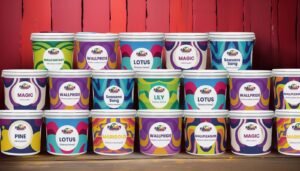
Conclusion
In the exploration of water-based paint manufacturing, we have examined several pivotal aspects that underscore the significance of these innovative products within the painting and coatings industry. Water-based paints, including a variety of formulations like those inspired by mithila paints, are increasingly recognized for their eco-friendly properties, ease of application, and versatility. These attributes not only cater to the contemporary consumer’s preference for sustainability but also align with evolving regulations that prioritize health and environmental safety.
The benefits of using water-based paints are manifold. Firstly, they emit fewer volatile organic compounds (VOCs) compared to their solvent-based counterparts, thus contributing to improved indoor air quality. This makes them particularly appealing for residential projects, where occupants are often sensitive to strong odors and chemicals. Additionally, water-based paints offer excellent color retention and durability, providing a long-lasting finish suitable for a variety of surfaces. Their easy cleanup with soap and water further enhances their attractiveness for both professional and DIY applications.
Moreover, the gradual shift towards sustainable practices in the construction and design industries reflects a growing commitment to environmental responsibility. Selecting water-based options such as mithila paints supports these sustainability goals, fostering a healthier planet for future generations. As consumers become more informed about the environmental impact of their choices, the demand for water-based materials is likely to rise, creating a market ripe for further research and development.
In conclusion, the water-based paint manufacturing industry presents a promising avenue for innovation and sustainability. Encouraging a deeper engagement with this topic can empower individuals and professionals alike to make informed decisions in their painting projects. Exploring the benefits of water-based paints such as mithila paints is not just beneficial for one’s immediate needs, but also contributes to a larger commitment to environmental stewardship and responsible consumption.

